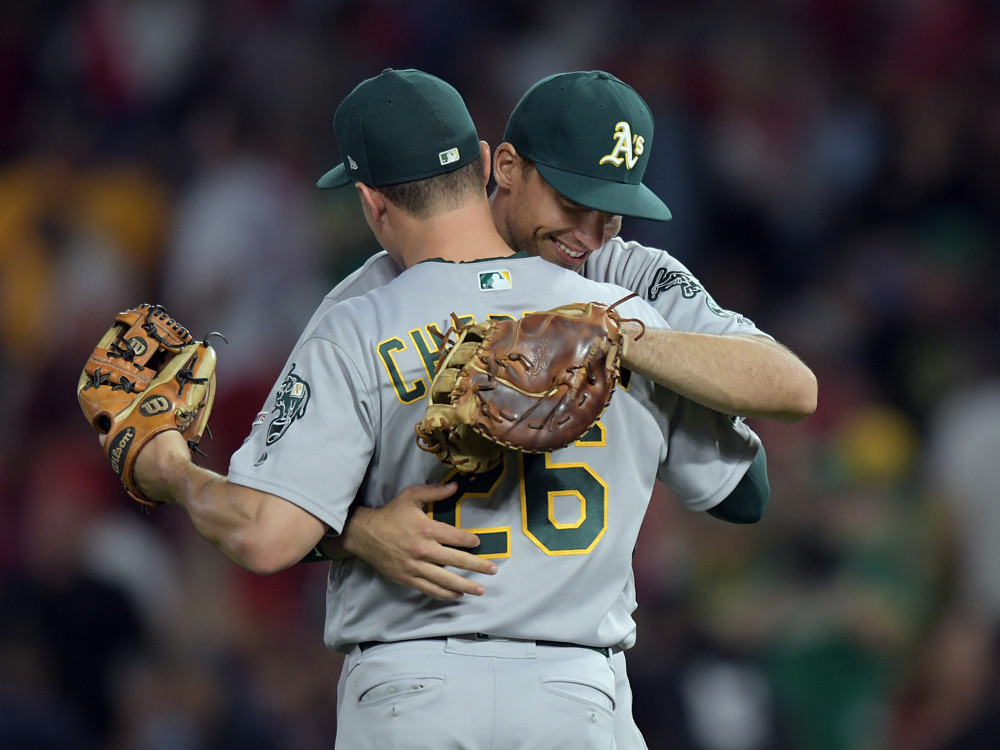By Mark Simon
At the time I watched then-Twins pitcher Francisco Liriano’s no-hitter against the White Sox, I was only the 824th person to click on the YouTube link. Compare that to the more than 16,000 combined that have clicked on two versions of Roy Halladay’s perfect game or the more than 157,000 that have checked out Tim Lincecum’s first no-hitter for the Giants.
It makes sense.
I’ve written about two extremely well-pitched games – Max Scherzer’s 17-strikeout no-hitter against the Mets and Halladay’s perfect game. This one is on the other end of the spectrum. Francisco Liriano entered the 42-degree evening in Chicago with a 9.13 ERA and 18 walks in 23 2/3 innings pitched.
A bad no-hitter can still be a good watch, or at least an interesting one.
It shows that you never know what you might see in a baseball game. The result of this one qualified as highly unlikely. Let’s look at what the data showed us about this game.
Effectively Wild
Liriano has struck out at least 10 batters in a game 27 times with a career-high of 15. He didn’t have that kind of stuff in this game. Not even close. Liriano finished with two strikeouts and six walks. But it was an effective wildness (podcast pun intended). The White Sox announcers, Steve Stone and Mike Huff, made repeated references to Liriano having a nasty slider (which got him 11 outs) and an occasionally-impressive changeup (which got two).
Most importantly, he kept the ball down. In 2011, opponents hit .308 against him when he threw a pitch in or above the upper half of the strike zone and .219 in at-bats ending with a pitch in or below the lower-half.
Liriano threw 87 of his 123 pitches in the lower-half of the zone, his fourth-highest rate of low pitches in his 24 starts that season. In sum, he netted three double plays and only two hard-hit balls. He made it work.
By the way: Do you know how hard it is to throw a complete game in which you strike out two or fewer and walk six or more? Liriano is the only pitcher to do that in the last 26 seasons. The last starting pitcher to do it before Liriano was knuckleballer Tim Wakefield for the Pirates against the Phillies at the end of the 1993 season. Adam Wainwright and Trevor Bauer got through eight innings with at least six walks last year but were both hooked.
And the last pitcher to have that strikeout-walk combo or worse in a no-hitter was Ed Lafitte of the 1914 Brooklyn Tip-Tops against the Kansas City Packers in the Federal League. There’s no video available for that one.
The odds weren’t in his favor
The 2011 Twins ranked 27th in the majors and last in the American League in Defensive Runs Saved. They ranked last among all teams at shortstop (-26). But the players with the worst numbers at that position—Tsuyoshi Nishioka (-11) and Trevor Plouffe (-12)—were not playing. Their better-fielding infielder, Matt Tolbert (-1 in 31 games), was. Tolbert made four plays without issue in the last two innings, including the final one of the game, which we’ll address shortly.
The best defensive play of the game was made by Twins third baseman Danny Valencia. Valencia went well into foul territory to field this ground ball hit by Carlos Quentin in the seventh inning.

Valencia did not rate well as a third baseman either that season (-13 Runs Saved, 3rd-worst in MLB) or for his career (-37). But he made a Matt Chapman-like play to get this out. Our calculations were that this ball had a 61% out probability (in an era before we could consider positioning), so it wasn’t a completely improbable play. Valencia got the desired result.
There were several examples in which the Twins’ defensive positioning was sharp. The best example of that was the first out of the game. Alexei Ramirez entered 10-for-20 against Liriano and hit a line drive right at Valencia.
The next-best looking defensive play came in the fourth inning when center fielder Denard Span chased down Quentin’s fly ball, one that had a 70% out probability. Span was the best defensive player the Twins had that season, leading the club with 9 Runs Saved.
Them’s the Breaks
Liriano didn’t seem to benefit much from home plate umpire Bruce Dreckman, but he got a little help from first base umpire Paul Emmel who called Gordon Beckham out at first base when Justin Morneau missed on his attempt to complete a double play with a swipe tag in the eighth inning.
Instant replay didn’t exist for calls on the bases until 2014, so there wasn’t anything Beckham or manager Ozzie Guillen could do other than protest. For what it’s worth, Emmel ranks middle-of-the-pack among umpires on calls at first base on what we deem “50-50 plays” in that time. He just happened to not get this one right.
Done (Dunn) Shifting
The use of defensive shifts in 2011 pales in comparison to how often they’re used in 2019. By our count, teams shift more than 20 times more often now than they did then. But there were a few hitters against whom defensive shifts were used at least semi-regularly. One of them was Adam Dunn.
Dunn hit balls to the right of second base 78% of the time in 2011, which meets the SIS threshold as a shift candidate. He stayed true to that in the first two times that he put the ball in play, hitting into a 4-6-3 double play and grounding to first base. With two outs in the ninth inning, Dunn was the White Sox last hope to get a hit. With Liriano’s pitch count at 116 entering the at-bat it figured that he was tiring, so it stood to reason that there was an even higher likelihood that Dunn would pull the ball.
But the Twins stayed true to what they did that season. Minnesota had the third-fewest balls in play against their shifts of any team in the majors. It amounted to about one ball in play against a shift every five games.
So though Tolbert was cheating towards second base, he wasn’t shifting. And that was a good thing because when Dunn oddly timed a slider and lined it to the left side, Tolbert was able to quickly shuffle two steps to his right to make the catch. That ball had a 67% out probability against an unshifted defense at that time.
However, line drives hit to that approximate area by left-handed batters against fully-shifted defenses in 2019 (meaning three defenders on the right side) were turned into outs 25-of-106 times (24%).
Not shifting Dunn there was an unorthodox decision that got a good result. An unorthodox but good result is also appropriate in describing this no-hitter.


